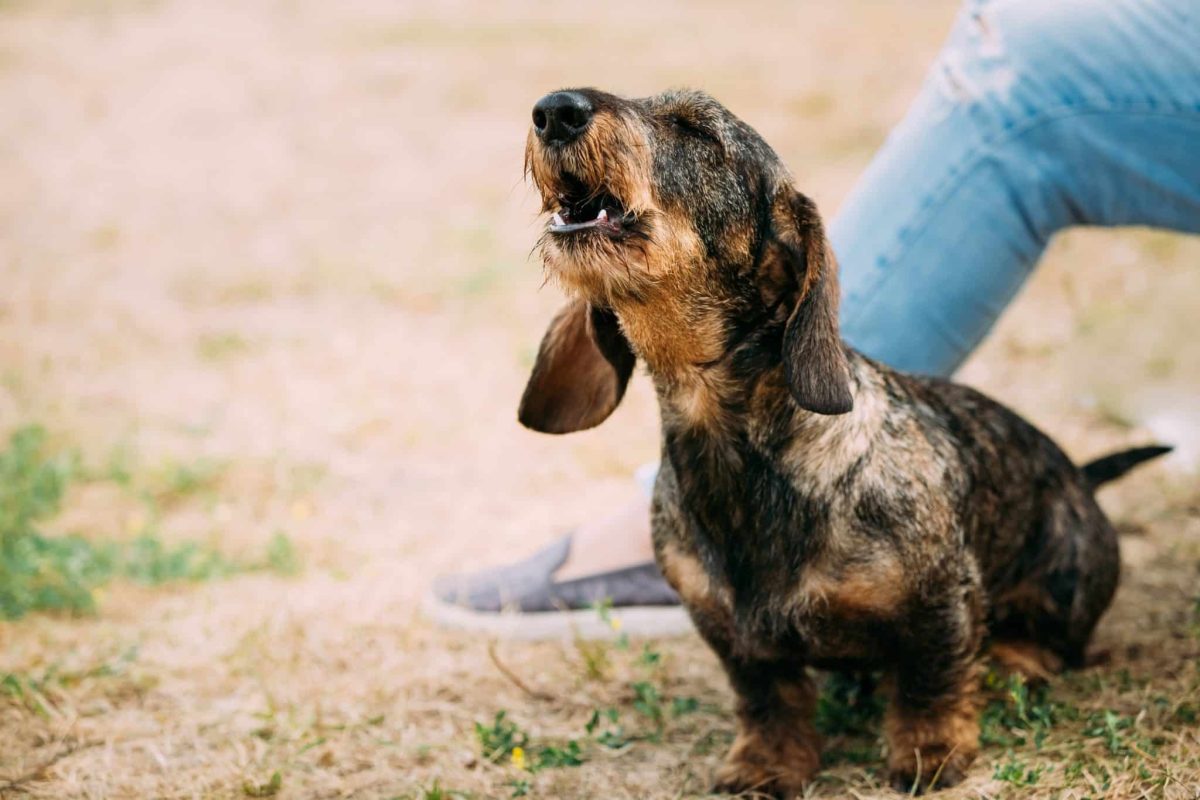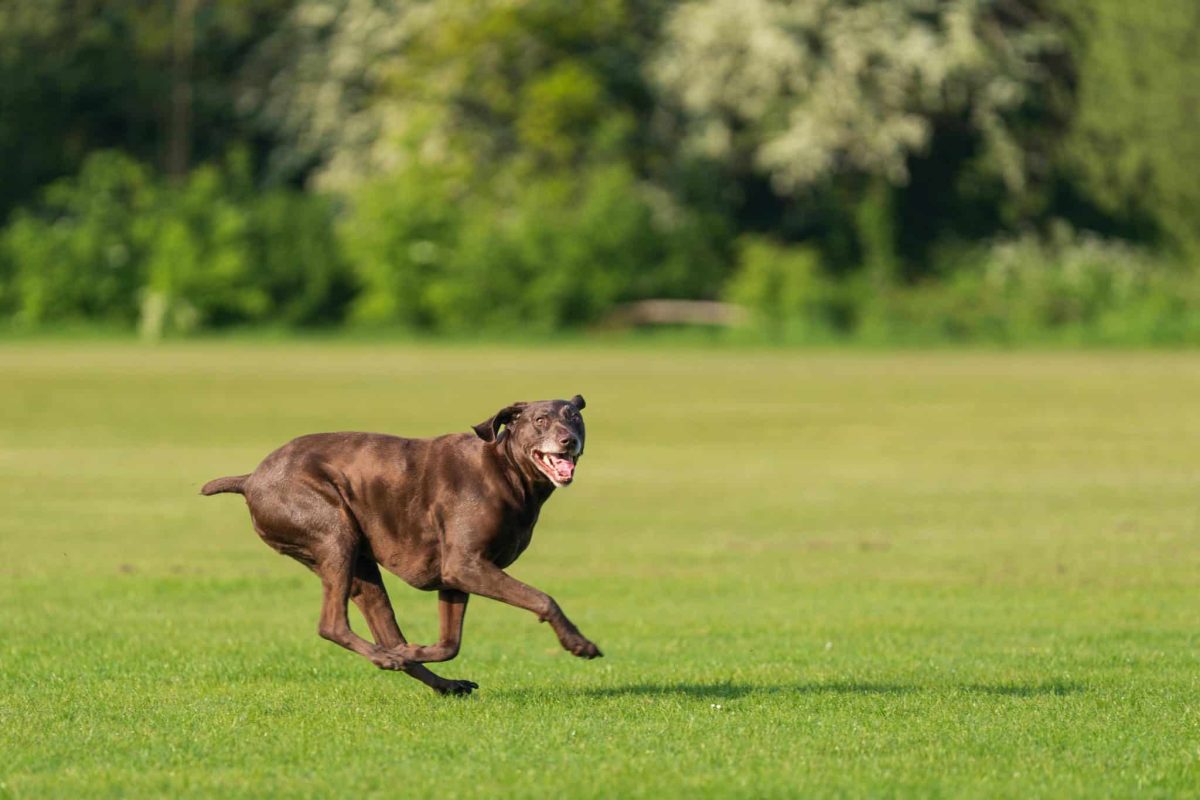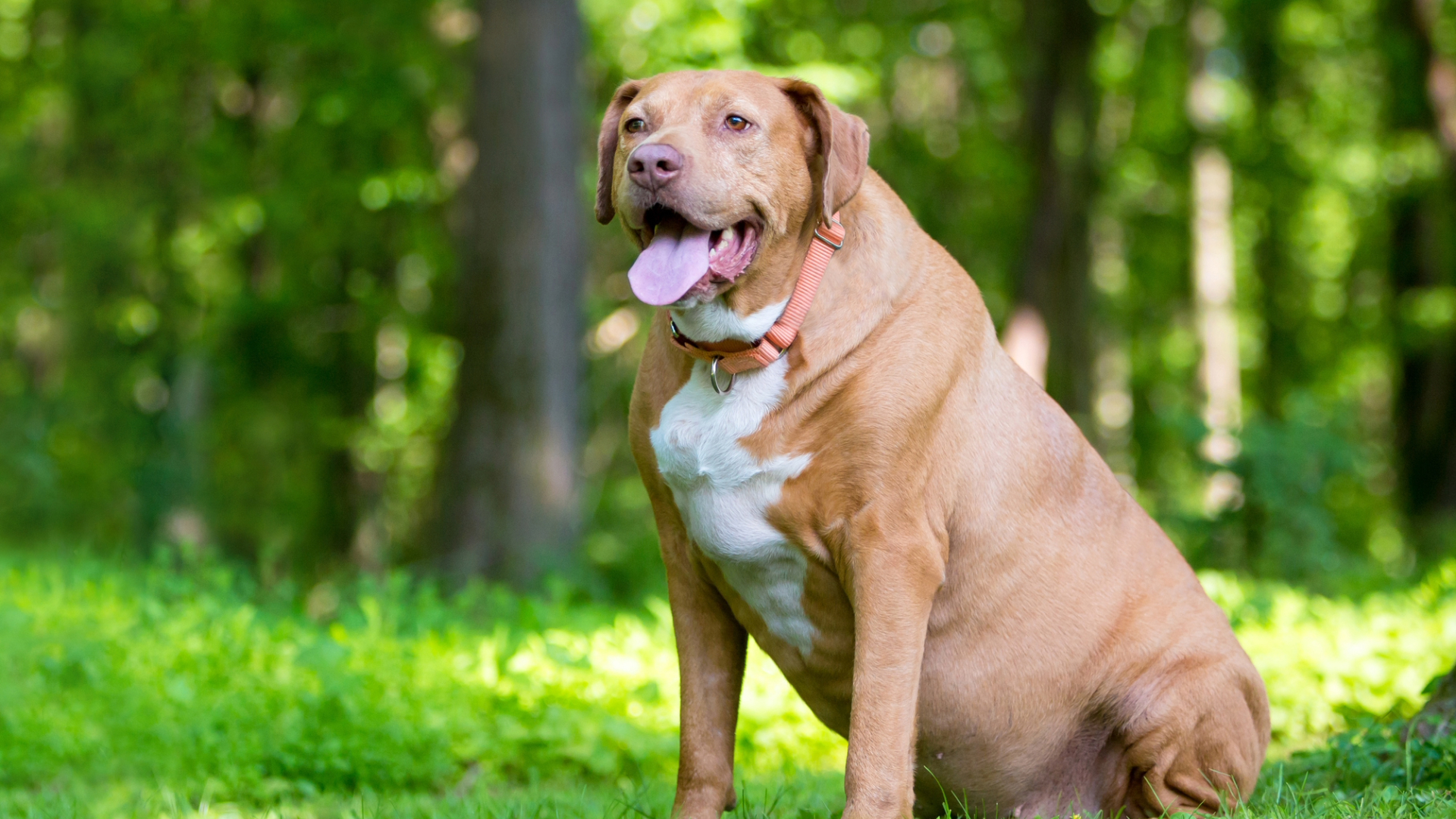Shutterstock
Dogs feel deeply, and sometimes their emotions show up in ways that aren’t always obvious. Anxiety in dogs is more common than many realize, and it can appear in behaviors that range from subtle to dramatic. These signs might be your dog’s way of saying, “I’m stressed!” Recognizing these signals is the first step in helping your pup feel safe, calm, and emotionally supported. Once you know what to look for, you can provide the reassurance they need to feel secure and happy.
Excessive Barking or Whining
 Shutterstock
Shutterstock
If your dog seems to have discovered their voice and won’t stop using it, anxiety might be the culprit. Constant barking or whining—especially when you’re about to leave or they’re left alone—can be a form of canine protest rooted in fear. It’s their way of saying, “Don’t leave me!” or “Something doesn’t feel right!” While some dogs are naturally more vocal, a sudden increase in noise levels often signals something more profound than just boredom.
Destructive Behavior
 Shutterstock
Shutterstock
If your shoes, sofa cushions, or drywall suddenly become chew toys, your dog may be experiencing anxiety. Destructive behavior is often a result of nervous energy with no healthy outlet, especially when they’re left alone. Dogs don’t destroy things out of spite; it’s more like their version of a stress ball—with teeth. Identifying the root cause of the anxiety is key to curbing this chaos before your furniture becomes confetti.
Pacing or Restlessness
 Shutterstock
Shutterstock
Some anxious dogs cannot sit still, and pacing is a significant sign that their internal stress level is escalating. This repetitive motion is their way of trying to self-soothe, especially in unfamiliar or unsettling situations. If your dog turns into a furry metronome during thunderstorms, vet visits, or when guests arrive, anxiety may be behind the back-and-forth behavior. It’s not just annoying—it’s a physical manifestation of mental discomfort.
Trembling or Shaking
 Shutterstock
Shutterstock
A trembling dog isn’t always cold—sometimes, they’re scared or overwhelmed. Shaking can be triggered by loud noises, changes in routine, or separation from their favorite human. It may seem dramatic, but for dogs, it’s a very real physical response to internal stress. If your pup resembles a vibrating fuzzy potato every time you grab your car keys, it’s time to dig deeper into the cause.
Excessive Licking or Chewing
 Shutterstock
Shutterstock
Constant paw licking or chewing on limbs can be more than a quirky habit—it’s often a sign of anxiety or emotional distress. When dogs feel overwhelmed, they may exhibit repetitive behaviors as a means of self-comfort, much like nail-biting in humans. Over time, this can lead to raw skin, infections, or hot spots that need medical attention. If your dog seems obsessed with self-grooming, it might be their way of saying they’re not okay.
Panting When It’s Not Hot
 Shutterstock
Shutterstock
Panting is normal after a good zoomie session, but if your dog is panting heavily while lounging on the couch, it could be a sign of anxiety. Dogs often pant excessively when stressed, scared, or uncomfortable—even in a cool room. Other signs, such as drooling, pacing, or wide eyes, usually accompany this panting. If your dog sounds like they just ran a marathon while sitting still, stress may be the finish line they’re stuck at.
Trying to Escape
 Shutterstock
Shutterstock
Dogs experiencing high levels of anxiety will sometimes attempt the canine version of “I’m outta here.” This could mean digging under fences, squeezing through tiny gaps, or bolting through open doors. These escape attempts are often driven by fear or panic, especially in cases of noise phobia or separation anxiety. If your dog suddenly acts like a tiny Houdini, it’s likely their way of fleeing from something that feels emotionally overwhelming.
Avoidance or Hiding
 Shutterstock
Shutterstock
Some dogs channel their anxiety into silence and solitude. If your typically social pup suddenly retreats under the bed or into a closet when guests arrive or during storms, they’re not just being shy—they’re hiding from stress. Dogs that hide are trying to create a safe space where they feel protected from whatever’s bothering them. While it may seem harmless, frequent hiding can indicate a deeper emotional issue that needs attention.
Change in Appetite
 Shutterstock
Shutterstock
A sudden disinterest in food or treats—especially the kind that used to make your dog drool—is a major red flag for anxiety. Dogs may lose their appetite when they’re feeling anxious, stressed, or emotionally unsettled. On the other hand, some dogs may overeat or beg for food as a form of self-soothing. Either way, a noticeable shift in eating habits usually signals something is out of balance, emotionally or physically.
Pottying Inside the House
 Shutterstock
Shutterstock
If your house-trained dog starts having accidents indoors, anxiety could be to blame, especially if it happens during loud events, travel, or when you’re away. Dogs under stress may lose control of their bowels or bladder as part of a panic response. This isn’t a training issue—it’s more like their version of a stress meltdown. If your previously potty-perfect pup starts backsliding, it’s time to check on their emotional health, not just your carpet cleaner supply.
Hyper-Attachment or Clinginess
 Shutterstock
Shutterstock
If your dog turns into a furry shadow who insists on following you from the bathroom to the fridge, they might be dealing with anxiety. Extreme attachment can be a symptom of separation anxiety or a general fear of being left alone. They don’t just want to be near you—they need to be near you to feel safe. While it’s flattering to have a loyal companion, this level of dependence can be emotionally draining for both of you.
Excessive Drooling
 Shutterstock
Shutterstock
While some breeds are naturally droolier than others (we’re looking at you, Mastiffs), a sudden increase in slobber, especially in non-food situations, could point to stress. Anxious dogs may drool excessively due to nausea or sheer nervous energy, particularly during car rides or visits to the vet. It’s as if their anxiety is dripping from their mouths in real time. If your dog’s drool output suddenly rivals a garden hose, it’s worth investigating what’s making them uneasy.
Tail Tucking or Ears Pinned Back
 Shutterstock
Shutterstock
Body language often speaks louder than barks, and a tucked tail or pinned-back ears are classic signs of canine anxiety. These subtle cues indicate fear, discomfort, or a desire to withdraw from whatever is happening around them. Dogs in this state often appear smaller or hunched, trying to make themselves less visible. Learning to read these quiet signals can help you step in before your pup’s anxiety escalates into more extreme behaviors.
The Ruff Truth About Dog Anxiety
 Shutterstock
Shutterstock
Dogs might be man’s best friend, but they still have worries, fears, and emotional baggage (like the vacuum cleaner or that one guy with sunglasses). Anxiety in dogs is often mistaken for bad behavior, but it could simply be a rough mental health day. Dogs can’t tell us how they feel, but their behavior speaks volumes. Understanding anxiety involves creating a safe and supportive environment. By recognizing the signs early, you can help your dog feel calm, secure, and happy, while maybe saving your shoes in the process.








